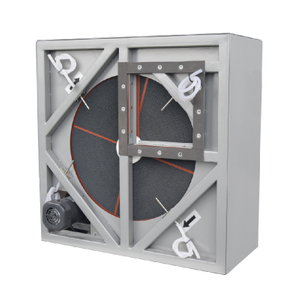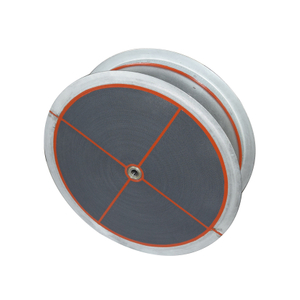Desiccant Wheel Air Conditioning System In Medical Industry?
Views: 130 Author: Site Editor Publish Time: 2021-12-23 Origin: Site
With the progress of pharmaceutical science and technology as well as the continuous upgrading of product technology, a large number of foreign-funded pharmaceutical enterprises have set up plenty of manufacturing bases in China. Therefore, the medical industry standards have been greatly improved. In the production technology and production process, the environmental temperature, humidity, and cleanliness are put forward higher requirements, which means that we have to provide a reliable and stable air conditioning system such as desiccant wheel air conditioning system, especially for the air environment which requires a low humidity.
At present, there are four kinds of conventional air dehumidification: ventilation dehumidification, cooling dehumidification, liquid green desiccant, and solid adsorbent. In the air conditioning dehumidification system, cooling dehumidification and solid adsorbent are the main means. Of course, liquid desiccant dehumidification systems are also very popular. Cooling dehumidification is more suitable for an environment which has not very high humidity requirements. The effect of this method is relatively good, its performance is stable, and the energy consumption is relatively low. Therefore, the current application of this method is more widely.
However, it is uneconomical for many medical enterprises to use a cooling dehumidifier in a place where the environment requires high humidity. Nowadays, the commonly used manufacturing method of low humidity environment is to use adsorption technology to absorb moisture in the air to get dry air. The use of silica gel or molecular sieve adsorption has gradually become the mainstream for dehumidification. The adsorption dehumidifier can be divided into adsorption tower type and dehumidifier wheel type adsorption. The latter has adapted to the desiccant wheel technology which will not be affected by the dew point. What’s more, this technology has achieved a high goal, especially suitable for low humidity conditions. It has been accepted and mastered by plenty of domestic enterprises. The development of science and technology has made great progress.
Most pharmaceutical factories require the workshop to maintain a stable environment throughout the year, especially for the temperature, humidity, air cleanliness, air distribution, pressure balance, and other air conditioning parameters of the production environment. Different from the requirements of other constant temperature and humidity environment systems, some pharmaceutical processes put forward strict requirements on the accuracy of air humidity. For the configuration of air conditioning systems such as dry desiccant dehumidification systems, the system is required to have the function of dehumidification in summer and it should be humid in winter.
According to the above analysis, the energy consumption can be saved about 45 percent by using the humidity desiccant system like the best desiccant dehumidification system and the traditional natural dehumidifier which should adapt to rear heater mode. At the same time, because the natural dehumidifier can further dehumidify and dry the fresh air to offset the other indoor humidity load of the workshop, especially when the first time to test the system and the room calorific value is insufficient. The operation of this kind of system is more reliable and the safety is better, which can completely meet all production requirements of the clean workshop. Under the condition of low humidity, the combined dehumidification air conditioning system with rotor and cooling function has incomparable advantages over the dehumidifier only.









